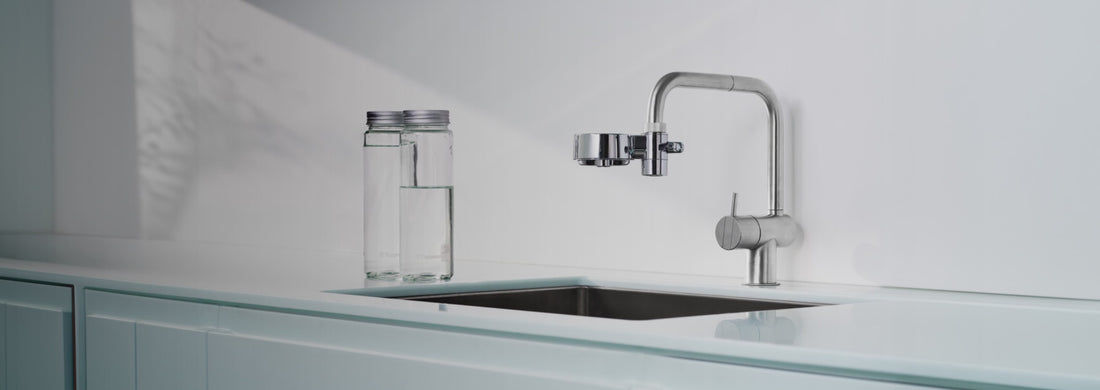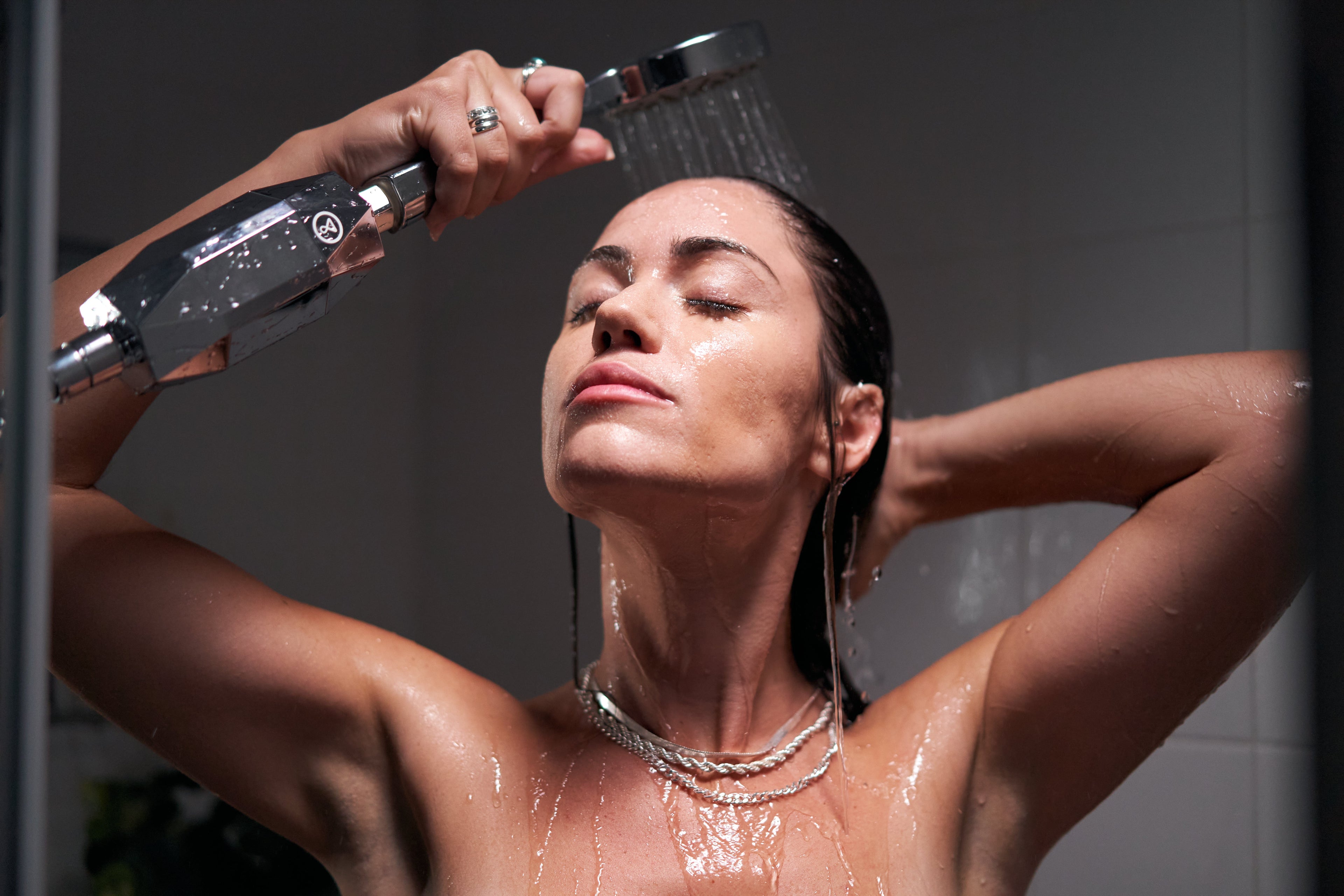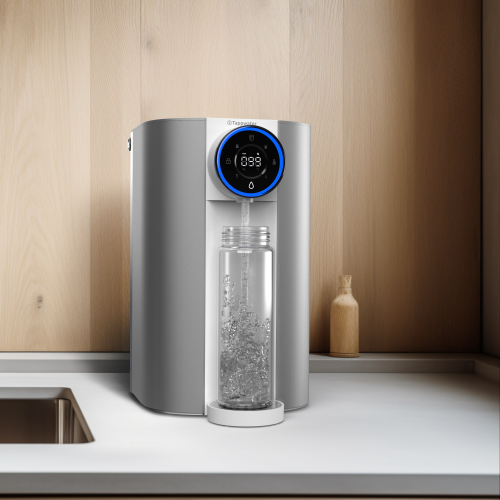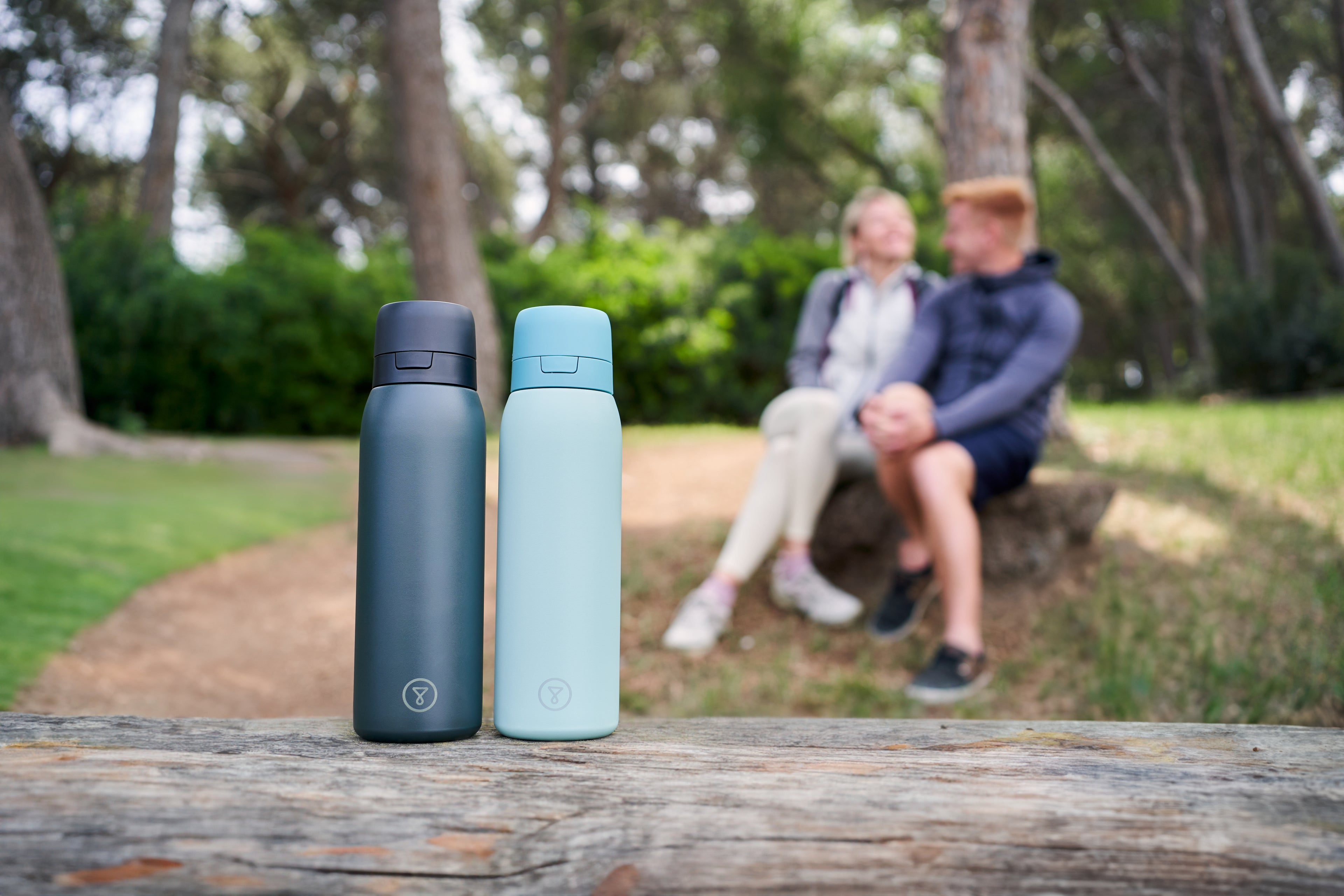Is the tap water in Malta drinkable?
Can you drink the tap water in Malta?
(Latest update: 27th September 2025)
Simple answer: Yes - but read on to find out why
Thoughtful answer: It depends where you are. In a hotel? Probably not. At home? Only if you like the taste or if you are not concerned with contamination. But read on to find out some facts to consider first.
Links: I am giving you many links to research in this article, they will open in the same browser window, ⬅️just go back in your browser to keep reading!
Lets deal with the simplified answer first.
Malta's tap water supply conforms to all EU standards for drinking water and so from the government health perspective, its safe to drink at home from your kitchen mixer if your supply is coming from the mains supply.
If you are in a hotel and drinking from a bathroom tap, you probably do not want to drink the water as it will have been stored in a tank before distribution so that increases the possibility of contamination. Ask at reception as some hotels will have filtered water in the rooms.
At home drinking straight from bathroom or shower units carries a risk of contamination as water has been stored in a tank. Best to keep to the kitchen mixer, which according to current building regulations must be connected to direct government supply from the street.
But people in Malta generally do not drink tap water - why?
The answer is in the taste. If asked most people would say they do not like the taste. This could come from the fact that there are an abundance of healthy minerals in the water which can be "felt" in the taste, but is also a function of the added chlorine in the water and potentially the reaction that chlorine has with pipes and infrastructure.
Significant improvements have been made in the past years to the infrastructure which are described in more detail below and this has resulted in lower chlorides being used and a more balanced taste overall which is fairly standardised over the whole country - so I think we can say the situation has improved. But consumer behaviour takes a while to change so that brings me to the second reason why people do not drink tap water. Trust.
Do people trust tap water in Malta?
Generally No. Some people will refer back to the Trihalomethane and Cancer scares from 2020 where a study concluded that Malta had the second-highest amount of THMs in Europe in its tap water, with an average level of 49.4 μg/l. This study was quite damaging and led Water Services Corporation to issue a defence statement.
This kind of public fear takes many years to overcome, its been just 5 years and its clear that the public perception of Malta tap water is quite negative. But this is changing. Infrastructure investment, blend changes and improved taste and a heavy marketing campaign in 2025 called the Tap Water Revolution is helping to change the narrative.
There have been some great PR stunts on the back of global studies that indicate that Malta is ranked 10th in the world for water quality.
Whilst this makes great headlines what was clear was the consumer back lash at promoting these headlines on social media is a great indication of the distrust and lack of belief the generally people have in a headline like this or in the tap water itself. It's important to note that this study that was referenced did not test any tap water at all. Its a study based only on the number of reported deaths from drinking tap water per 1,000 population. Frankly not many people would have read the study (I did).
But there is positive change and Tappwater is at the heart of this consumer behaviour change, the Water Services Campaign highlighted that the answer to the taste issue is to have an activated carbon filter to refine the tap water at the Point Of Use, just before you drink it and Tappwater faucet filters are perfect for the job.
Notably a faucet water filter also deals with the trust issue. The addition of a point of use filter from a reputable and tested brand to give your water a final clean before consumption puts your mind at rest that you and your family are consuming healthy water.
Why bottled water is not the answer in Malta
In fear, and dislike of the taste consumers flocked to bottled water. Malta has a high bottled water consumption pattern, you see bottles for sale everywhere and marketing tactics such as "free" super market water have given this a push.
But times are changing with bottled water now being an expensive and time consuming experience. The BCRS scheme changed the narrative, and consumers are beginning to realise the "free" water is not really free at all, in fact it is quite expensive when compared to using your points for food.
Furthermore we have seen continuous studies on the dangers of microplastics with up to 500,000 small pieces of plastic found in every litre of plastic bottled water.
The reason I started Tappwater in Malta in 2020 was to provide a reliable, trustworthy efficient solution for the plastic bottles we see on the streets, in the supermarket and washing up on our beaches. Bottled water is not the answer in Malta, tap water is the answer and Tappwater makes that possible.
The Malta government incentivise consumers to move away from plastic
In addition to the a heavy marketing campaign in 2025 called the Tap Water Revolution the Maltese government launched a 60% grant scheme for home owners to purchase an activated carbon water filters and this significantly more generous grant when on a purchase of €166 the consumer can get back €100 has really had an affect, here at Tappwater customers are focussed on buying a water filter that fits their needs and very motivated by the grants on offer.
Reverse Osmosis filters have a significantly reduced grant level, backing the general move away from reverse osmosis because in the words of WSC:
A simple carbon filter is all you need to enjoy great-tasting tap water at home. WSC has already done the heavy lifting with their advanced RO treatment plants, making home RO systems unnecessary. Additionally, home RO systems are more expensive to purchase and waste up to 70% of water during the filtration process, making them both costly and environmentally inefficient.
In 2025 the Government launched a voucher scheme for vulnerable households giving out 13,000 vouchers by post to these households and enabling them to purchase activated carbon water filters. At Tappwater we embraced this scheme and facilitate the exchange of a voucher for Tappwater filters in a group of stores in Malta. This scheme has had a significant impact on this sector of society who may have otherwise struggled to make a consumer behaviour change.
Why tap water is a raging debate in Malta
Visitors and people living in Malta often ask "Is Malta's tap water safe to drink?" and in many Facebook groups a questions such as this causes a strong discussion with many differing opinions. Its common to see both the ardent supporters of tap water in Malta advocating that there is nothing wrong with it, and the complete opposite of that with comments that prophecy all manner of doom if you do drink the tap water.
At Tappwater Malta we constantly monitor both the facts and the opinions of Maltese residents about the quality of the tap water in Malta and we retain this page, constantly updated in order to reflect the current situation.
As a resident of Malta for the past 16 years I have seen the quality of tap water in Malta change as the country develops and grows. But even with the investments made by the Water Services Corporation in Malta there has been considerable population growth and the construction of a large number of dwellings which place additional strain on water resources in Malta.
The tap water in Malta is therefore an ever evolving story and in addition our environment is also changing which further constrains the limits on our natural resources in Malta.
The story is not just about the water supply, Water Services Corporation is only responsible for the water up to the point of connection at your building. Depending on the age of the building and the building type, the internal pipes could be potentially adding contaminants such as rust, chemicals from PVC pipes etc.. Living in a block of flats as many of us do, there are many things you cannot control that could affect your supply. Consumers may not realise this and focus on the supplier.
Is tap water in Malta really that much different to other countries?
With the vast improvements made over recent years Malta really does have a reliable tap water supply and although there is always a strong debate in Malta about tap water and a high level of distrust if you take a look outside Malta we are not so much at a disadvantage to many other European countries. Recently there has been major concern in the UK, France, Switzerland, and Brussels over PFAS contamination
The EEA's State of water Report (2024) points out that across Europe less than 40% of surface waters are healthy and 25% of ground water bodies are contaminated beyond healthy levels.
In Europe a water filter at point of use is becoming a necessary addition to every kitchen to ensure healthy drinking water for your family. Today Malta is in that similar position except here people are starting to trust more, and in other countries where people are used to drinking tap water, they are beginning to trust less.
Lets take a look at the current state of tap water in Malta
I will walk you through what the current state of the water supply is in Malta and provide some facts and figures and commentary.
 Where does Malta's water supply come from?
Where does Malta's water supply come from?
This a good place to start as it helps us understand what the issues are. Malta has no lakes, rivers or natural reservoirs so even though we are surrounded by water in the beautiful Mediterranean sea we need to get our water from the environment as we find it.
Much of the tap water comes from desalinisation plants and Malta has four of these in Ghar Lapsi, Pembroke, Cirkewwa and Hondoq, Gozo. These plants process the water and add chlorine to ensure the safety of the water to EU Standards.
The desalination process itself is highly reliable for producing a high quality of water, however it is energy intensive and means that after processing both Chlorine (to ensure against bacterial infection) and Lime (added to give desalinated water "taste and body" and also to raise the PH of the tap water to reduce the damage to the infrastructure pipes) must be added to the water to keep it safe to drink in Malta, and to conform to the EU Water Directive.
In 2024 the WSC produced over 38.8 million cubic metres of water for public consumption in Malta and 25.7M (66%) of that was produced from the 4 RO plants and 13.1 million cubic metres (34%) of that production was sourced from groundwater from 78 boreholes and 10 pumping stations in Malta and 37 boreholes and 2 pumping stations in Gozo.
Interesting to note in 2024 the RO production hit a peak record of 79,000 cubic metres during August a new record and that 50% of the production is from Pembroke and there were significant upgrades in capacity at Cirkewwa and Pembroke and at Lapsi in 2025 with more capacity upgrades already scheduled.
2024 A year of great change for Malta tap water
In the Water Services Corporation 2024 report Karl Cilia, CEO said:
2024 was also the year we made our vision for better-tasting tap water a reality. Through significant blending upgrades and distribution network overhauls, we laid the foundation for a new era of drinking water quality across the Maltese Islands. This initiative represents not only a technical triumph but also a commitment to reducing plastic waste by
encouraging people to drink directly from the tap.
In 2025 we have seen, tasted and felt those changes with the implementation of the RO production at Pembroke being transferred to the Ta' Qali group of reservoirs and then blended with ground water to achieve the homogeneous 70% RO 30% Groundwater blend. The same process, and blend, is used at the Qrendi reservoirs connected to the Lapsi RO plant and in Gozo with the Ta' Cenc reservoirs and Hondoq plant.
The Ta' Qali supply coming back to Valletta and the Northern Harbour area was also upgraded to handle up to 2 million litres per hour without a drop in pressure and further upgrades were made to booster pumps across Malta to maintain the water pressure with this new supply through the existing network.
The Tap water Revolution - its all about the blend
Water quality has been increasing, chlorides have been reducing to improve the taste and the blend has increasingly become RO (reverse osmosis) production water which has reduced the Total Dissolved Solids in the water to a level of around 500 parts per million which overall is an indication of improvements to the taste and texture, or "feel" of the tap water.
This has been an ongoing trend over the past years, forced by increasingly contaminated and reduced ground water supplies and increasing pressure from population growth.
As a tap water consumer your benefit is a better tasting, lighter water and at Tappwater we see this trend of reliance on RO produced water continuing, but its important to know that RO water has a low PH and so the water has to be enhanced with minerals to raise the Ph and prevent damage to pipes and infrastructure from low PH (acidic) water. Luckily alkaline water is better for consumption from a health perspective and Tappwater faucet filters are useful in this regard filtering out all the contaminants but keeping your healthy minerals.
Where is water stored in Malta?
With no rivers feeding lakes in Malta we do not see overground water reservoirs in Malta for the public supply network. However water needs storage and water is stored in 24 separate locations in Malta and Gozo totalling 400,000 cubic litres. This water is already blended between groundwater and reverse osmosis water and the levels are monitored continuously to ensure an effective supply across the islands.
Does the tap water in Malta meet all EU Standards?
According to all the EU and WHO guidelines the tap water in Malta is safe to drink. The supply of tap water in Malta is subject to the Directive (EU) 2020/2184 of the European Parliament and of the Council of 16 December 2020 which came into force in January 2021.
There are tests done regularly across all locations to ensure that the supply is meeting all the standards and the testing data is available to the general public to view in their area on the WSC Live Portal. Just click on your area under Control Room and Water Quality.
In the example below you can see the results showing an undetected level of bacteria, but relatively high Nitrates which is common in Malta.

What are the risks of drinking tap water in Malta?
So although the tap water in Malta is safe to drinking according to all the EU and WHO guidelines there maybe reasons why you would want to consider carefully before doing so.
According to the 2024 Water Services Corporation Annual Report 34% of the tap water comes from groundwater In Malta and this is mixed with the desalinated water to improve the taste. However our groundwater is polluted by Nitrates from farming with Malta having some of the most polluted groundwater in Europe.
Chlorine is the most common addition to water for public consumption, and the levels of chlorides added have been reduced over the last few years and are now 0.8mg/l (2024 Water Services Report) however DPB which are "disinfection by products" are an issue. DPB's are a complex mixture of chemicals and the two main classes of DPBs are trihalomethanes (THMs) and haloacetic acids (HAAs) which are formed at high concentrations after chlorination.
THMs are associated with a causal relationship to bladder cancer and this is presented in this January 2020 study of European countries where Malta was ranked 2nd highest in Europe for the levels of THMs found in tap water.
This study concluded that the most common THM in Malta was bromoform and that Malta had the 2nd highest bladder cancer PAF of 17.9% in the EU. A PAF is the "contribution of a risk factor to a disease or a death is quantified using the population attributable fraction (PAF)"
During those studies the mean rate of contamination of THM's was 49mg/L, the second highest in Europe which caused quite a scare. However Water Services Corporation publish the Group B Data for water testing and the current mean is below this level in 2024, however when I took a look at this data it was clear that there are significant areas in Malta where the level of THM's, although below the EU limit of 100mg/L are still in the range of 10mg/L to 30mg/L which points towards having a point of use water filter is a good idea.

What are my options for water can I drink in Malta?
There are three options currently:
- Drinking water straight from the tap
- Buying plastic bottled water
- Investing in a home water filter system
Drinking tap water in Malta
There are no doubts that some people drink the tap water in the Maltese islands, if you see any Facebook posts in various groups asking the question there will always be a minority of people showing up with comments that support drinking tap water in Malta.
However, the majority of people would disagree. It's a personal choice at the end of the day and made by weighing up your personal balance between health, safety and security for your family.
In fact it is general common knowledge that whilst you can drink the tap water in Malta, the Maltese people do not because of the taste and odour caused by the process that ensures the tap water is safe to drink!
Malta has made huge infrastructure investments since joining the EU and standards have certainly been raised over these past years with great results, however there is still some practical supply inconsistencies between some areas of Malta and even in a house with a mostly reliable water supply; there can be sudden and unexpected variances in water quality.
Tappwater faucet filters are a point of use solution to both the taste and lack of trust in tap water in Malt and activated carbon filters are now proposed as a solution by Water Services Corporation.
The plastic bottled water supply in Malta
Drinking water from plastic bottled water is very common in Malta. At the major supermarkets you can "earn" free plastic bottles of water by spending money and so it is a common site to see a family collecting multiple packets of plastic bottled water from the special plastic bottled water depot at a supermarket.
This does not make the change away from plastic bottled water in Malta an easy one, even though our numbers suggest that a family can be up to €248 a year better off by dropping plastic bottles water and using a water filter.
The water in Malta is actually quite alkaline with a healthy levels of minerals already in the water, in that way Malta's tap water is already like the bottled water that marketing suggests is healthy for you.
You can easily compare TAPP Water with bottled water to see which is more convenient, cheaper and better for the planet in our detailed report.
What are my options for a home water filter system?
It all depends on your level of investment and your view on maintenance costs, there are three systems you can use:
- Reverse osmosis
- Water jugs
- Tap water filter
Check out TAPP Water advanced microfiltration to learn more about this cost effective, independently tested solution to plastic bottles in Malta.
TAPP Water filters reduces Chlorine by 95% or more based on 100s of tests carried out on tap water around the world. This improves the taste instantly for chlorinated water. In addition to this TAPP Water Filters remove all known bi-products from Chlorine (whereof some potentially cancerogenic such as THMs). Tappwater.mt
Tappwater solves the four main problems with drinking tap water in Malta:
- Taste - Malta's use of tap water for drinking is among the lowest in EU, surveys conducted by the WSC shows that the preferred source of drinking water is, by far, bottled water because most people in Malta do not like the taste of tap water even if it meets all the EU safety standards. The WSC data shows that its a question of trust, simply put in Malta people just won't trust tap water even if it costs only €0.02c a litre.
- Plastic Bottles - over 200 million are used every year in Malta. That's loads of plastic bottles, about 500 plastic bottles for every household. Very little is recycled in Malta (only 14%), whilst some of it exported after processing, plenty of plastic never makes it to recycling and ends up in landfill or discarded because only 25% is ever collected.. We all know this in Malta, because we see plastic bottles everywhere, on the beach, in the water, in the countryside, on pavements. It cant be good right?
- Microplastics - When plastic gets into our environment it often ends up in our water system as microplastics; which we can then end up drinking. It may suprise you to know it takes 3 litres of water to make a 1L plastic bottle. Source: One Green Planet
- Cost - Finally consumers have to buy, carry home bottles from the store and then store and throw away the bottles. For this they pay almost 1000 times more than tap water. As if this wasn’t enough the plastic leeches into the water which means that our bodies get contaminated with BPA and phathalates of which we don’t yet understand the long term impact.Source: One Green Planet
You can read more about the Tappwater faucet filters and learn about the advanced technology water filter system available for drinking water in Malta.
Updates:
27-09-2025 Updated WSC Reverse Osmosis production figures for 2024 and the launch of the tap water revolution and new homogenous blend of water in Malta
04-12-2024 - Updated WSC Reverse Osmosis Water production figures for 2023 and the Pembroke-Ta Qali Tunnel progress
20-11-2023 - Updated WSC Reverse Osmosis Water production figures for 2022
20-11-2023 - Updated WSC Web Portal live link
20-11-2023 - Updated for Ta' Qali tunnel improvements

 ChatGPT
ChatGPT Perplexity
Perplexity Claude
Claude Google AI Mode
Google AI Mode Grok
Grok




